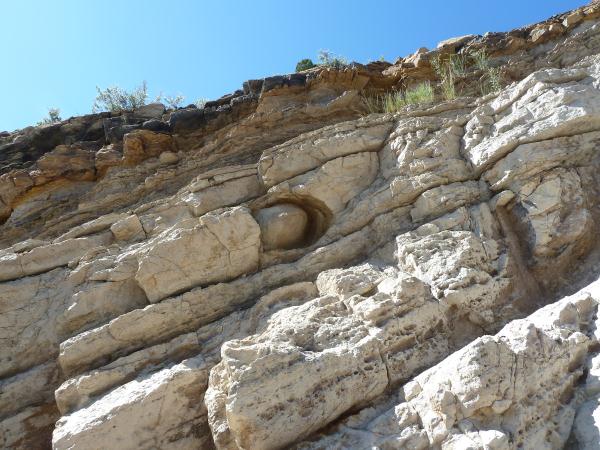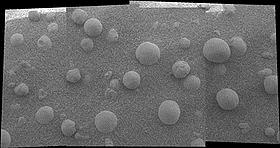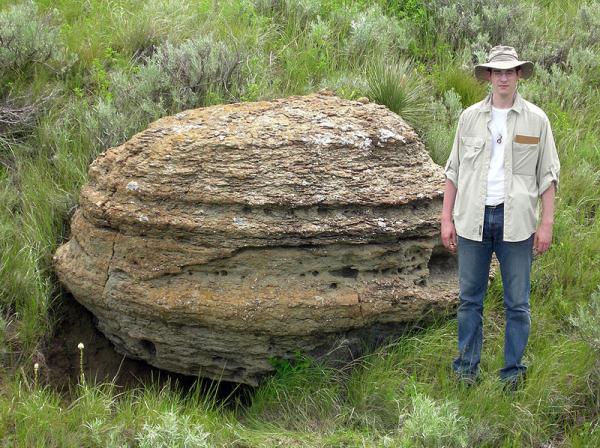
Concretions are a geological curiosity that
have mystified and intrigued scientific minds since the 18th
century.
They have been posited to be dinosaur eggs,
animal or plant fossils, bizarre human creations, or even
extra-terrestrially-based in nature.
But what *ARE* these large, often spherical
or egg-shaped objects, really?
The word 'concretion' is derived from the
Latin con meaning 'together' and crescere meaning 'to
grow'.
Concretions are typically formed through a
process where a nucleus or center of organic matter, such as a
leaf, tooth, piece of shell, or fossil, is covered by layers of
minerals through concentric growth meaning that the originating
matter is surrounded by successive layers of minerals which accrete
or adhere to the center object. This process results in increasing
the radius or size of the concretion over time.
Snuggly Kitten and I like to think of
concretions as the "pearls" of the geological world as they are
formed in a similar method, only through Mother Nature's efforts
rather than through oysters creating the layers.
While concretions can contain a fossil as
the nucleus or as a component they, themselves, are not fossils but
are commonly composed of calcite, silica, or hematite. They can be
composed of a number of other different minerals as well and
typically are very similar in color to the rock in which they are
embedded or created.
Concretions come in a plethora of sizes, a
bevy of unusual shapes, and are composed of a variety of different
chemical compositions. They also can be found in some very exotic
locations ~ from tiny "blueberry" hematite Martian Spherules
discovered by the Mars Rover, Opportunity,

to gigantic concretions in North
Dakota

and cannonball-sized concretions in
California, New Zealand, Greenland and China, among other places,
right here on Earth.
Many times geologists or paleontologists
crack concretions open to see if there is a valuable fossil at the
center ~ sort of the geological equivalent of "how many licks does
it take to get to the center of a Tootsie Pop"? If it were me, I'd
prefer to utilize an MRI or other technological method to "peek
inside" and ensure that whatever formed the center was truly worth
justifying the destruction of the unique creation.
So, now that you've learned all sorts of
cool information about concretions, to successfully log a "Find"
for this cache, you must e-mail us answers to the following three
questions and post a photo of yourself:
1. What size is the concretion located at
these coordinates here on Dinosaur Ridge?
2. How far from the ground do you estimate
this concretion is located?
3. What is your best guess at what material
forms the nucleus that is in the center of this concretion? (Yes,
you can be creative here.)
4. Please post a photo of yourself and/or
your GPSr and/or party either in front of the concretion or
somewhere else clearly identifiable as Dinosaur Ridge. (If you
cannot post a photo, please e-mail the explanation for not being
able to do so and include some information that can validate your
physical presence at the site.)
Obviously, no Internet search answers will
be accepted and logs that are not accompanied by an addition to the
gallery photo and an e-mail with the correct answers will be
deleted from the cache page.
We hope you have fun and enjoy learning a
lot about this geological marvel ~ we certainly did!